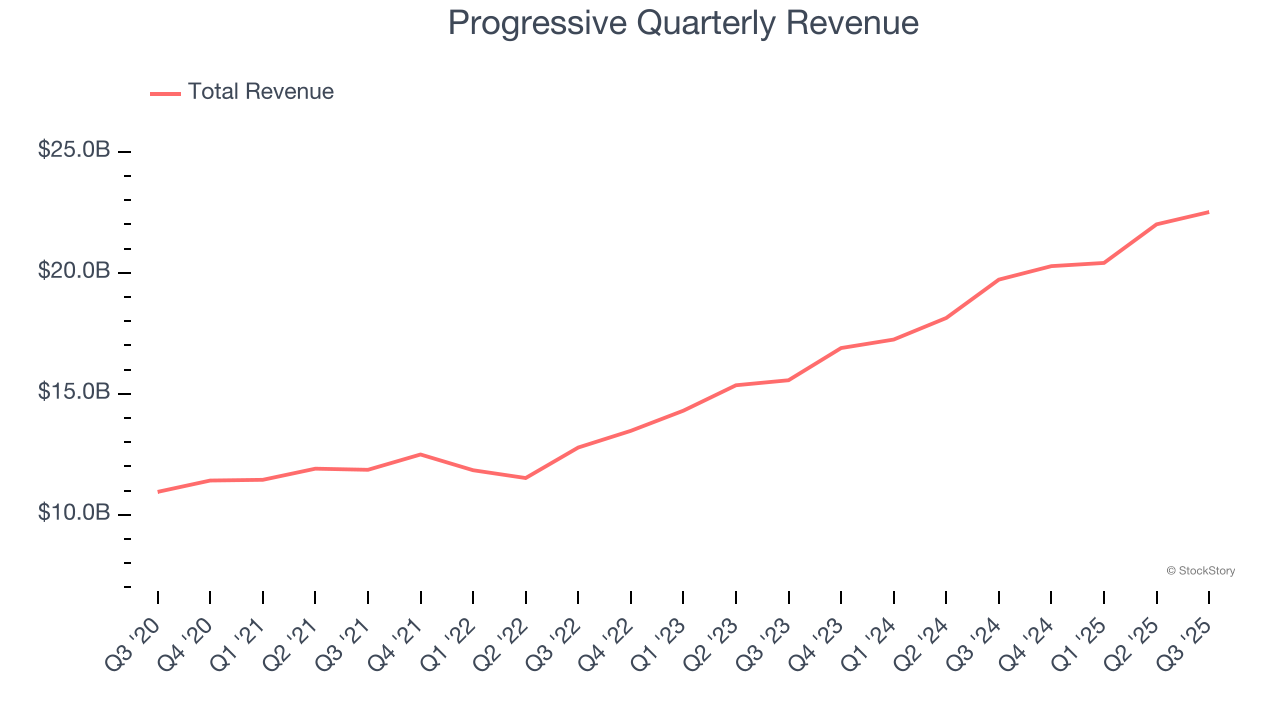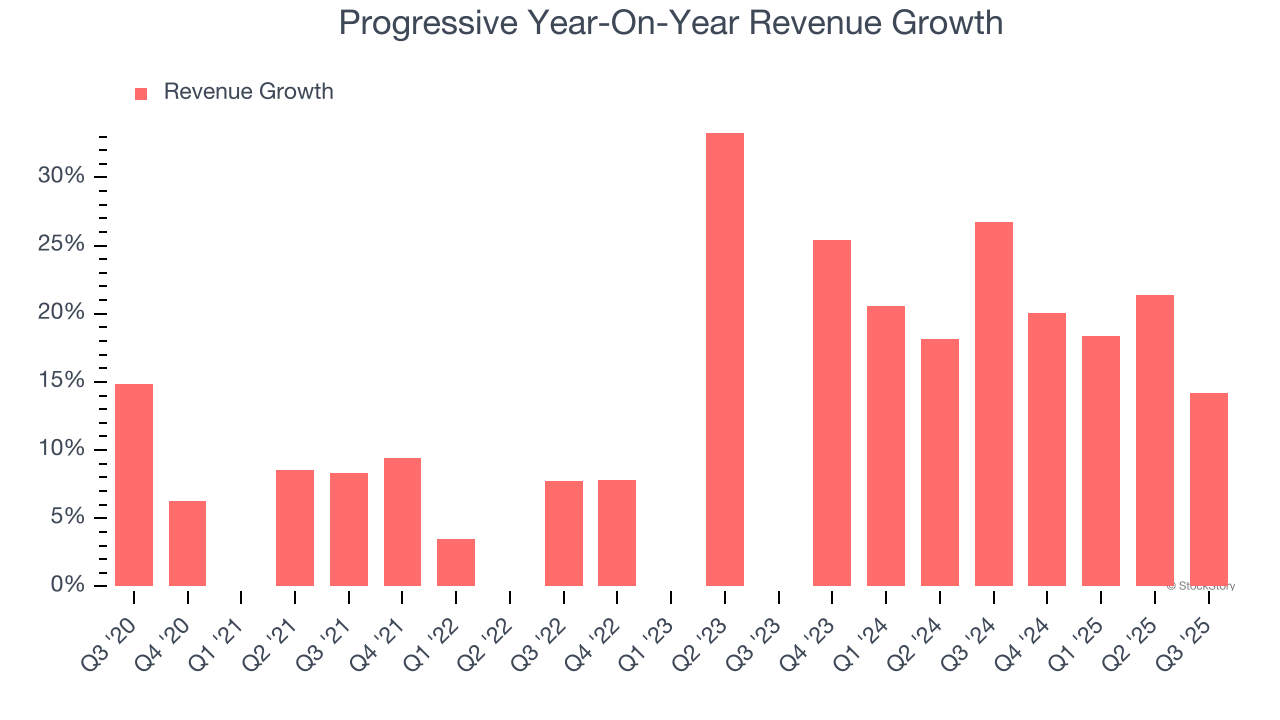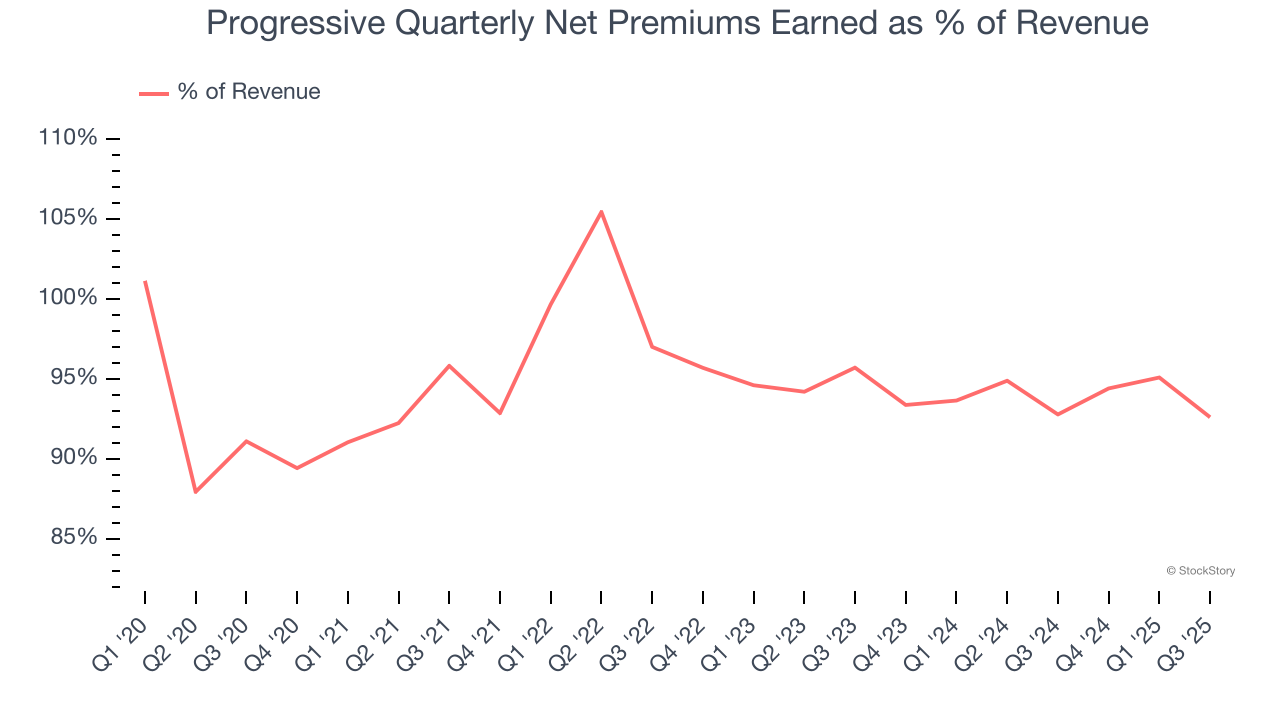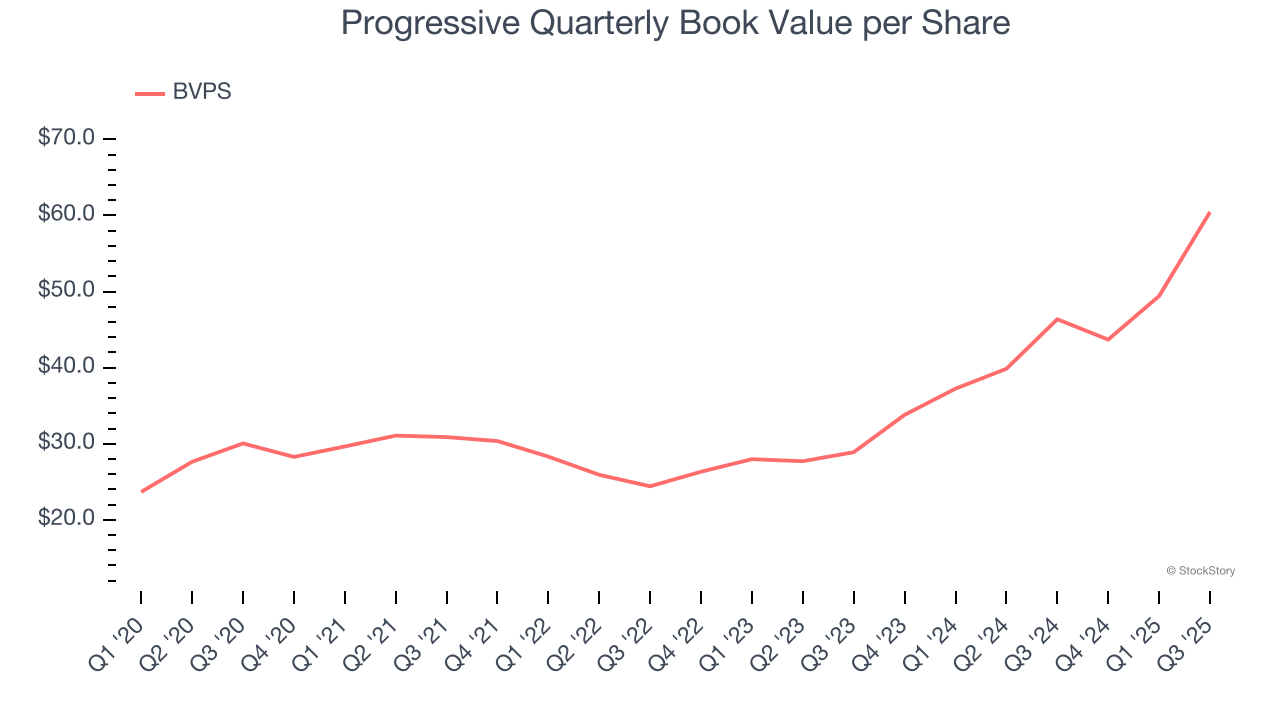
Insurance company Progressive (NYSE: PGR) met Wall Street’s revenue expectations in Q3 CY2025, with sales up 14.2% year on year to $22.51 billion. Its GAAP profit of $4.45 per share was 16% below analysts’ consensus estimates.
Is now the time to buy Progressive? Find out by accessing our full research report, it’s free for active Edge members.
Progressive (PGR) Q3 CY2025 Highlights:
- Net Premiums Earned: $20.85 billion vs analyst estimates of $21.1 billion (13.9% year-on-year growth, 1.2% miss)
- Revenue: $22.51 billion vs analyst estimates of $22.58 billion (14.2% year-on-year growth, in line)
- Combined Ratio: 89.5% vs analyst estimates of 86.1% (340 basis point miss)
- EPS (GAAP): $4.45 vs analyst expectations of $5.30 (16% miss)
- Book Value per Share: $60.45 vs analyst estimates of $61.57 (30.4% year-on-year growth, 1.8% miss)
- Market Capitalization: $140.9 billion
Company Overview
Starting as a small auto insurance company in 1937 with a pioneering focus on high-risk drivers, Progressive (NYSE: PGR) is a major auto, property, and commercial insurance provider that offers policies through independent agents, online platforms, and over the phone.
Revenue Growth
Insurance companies earn revenue from three primary sources: 1) The core insurance business itself, often called underwriting and represented in the income statement as premiums 2) Income from investing the “float” (premiums collected upfront not yet paid out as claims) in assets such as fixed-income assets and equities 3) Fees from various sources such as policy administration, annuities, or other value-added services. Over the last five years, Progressive grew its revenue at an incredible 15.2% compounded annual growth rate. Its growth surpassed the average insurance company and shows its offerings resonate with customers, a great starting point for our analysis.

We at StockStory place the most emphasis on long-term growth, but within financials, a half-decade historical view may miss recent interest rate changes, market returns, and industry trends. Progressive’s annualized revenue growth of 20.5% over the last two years is above its five-year trend, suggesting its demand was strong and recently accelerated.  Note: Quarters not shown were determined to be outliers, impacted by outsized investment gains/losses that are not indicative of the recurring fundamentals of the business.
Note: Quarters not shown were determined to be outliers, impacted by outsized investment gains/losses that are not indicative of the recurring fundamentals of the business.
This quarter, Progressive’s year-on-year revenue growth was 14.2%, and its $22.51 billion of revenue was in line with Wall Street’s estimates.
Net premiums earned made up 94.6% of the company’s total revenue during the last five years, meaning Progressive lives and dies by its underwriting activities because non-insurance operations barely move the needle.

Net premiums earned commands greater market attention due to its reliability and consistency, whereas investment and fee income are often seen as more volatile revenue streams that fluctuate with market conditions.
Software is eating the world and there is virtually no industry left that has been untouched by it. That drives increasing demand for tools helping software developers do their jobs, whether it be monitoring critical cloud infrastructure, integrating audio and video functionality, or ensuring smooth content streaming. Click here to access a free report on our 3 favorite stocks to play this generational megatrend.
Book Value Per Share (BVPS)
Insurance companies are balance sheet businesses, collecting premiums upfront and paying out claims over time. The float–premiums collected but not yet paid out–are invested, creating an asset base supported by a liability structure. Book value per share (BVPS) captures this dynamic by measuring these assets (investment portfolio, cash, reinsurance recoverables) less liabilities (claim reserves, debt, future policy benefits). BVPS is essentially the residual value for shareholders.
We therefore consider BVPS very important to track for insurers and a metric that sheds light on business quality. While other (and more commonly known) per-share metrics like EPS can sometimes be lumpy due to reserve releases or one-time items and can be managed or skewed while still following accounting rules, BVPS reflects long-term capital growth and is harder to manipulate.
Progressive’s BVPS grew at an incredible 15% annual clip over the last five years. BVPS growth has also accelerated recently, growing by 44.7% annually over the last two years from $28.89 to $60.45 per share.

Over the next 12 months, Consensus estimates call for Progressive’s BVPS to grow by 28.6% to $61.57, elite growth rate.
Key Takeaways from Progressive’s Q3 Results
We struggled to find many positives in these results. Its EPS missed and its book value per share fell short of Wall Street’s estimates. Overall, this was a softer quarter. The stock traded down 4.8% to $228.80 immediately following the results.
Progressive didn’t show it’s best hand this quarter, but does that create an opportunity to buy the stock right now? When making that decision, it’s important to consider its valuation, business qualities, as well as what has happened in the latest quarter. We cover that in our actionable full research report which you can read here, it’s free for active Edge members.






